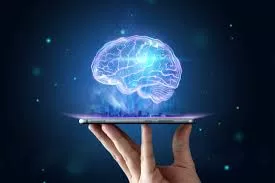In a groundbreaking development, US researchers have unveiled an artificial intelligence (AI) tool capable of discerning disparities in how the brains of men and women are organized at a cellular level. While previous studies have delved into brain size, shape, and weight, the intricate layout at the cellular level has remained largely unexplored until now.
This pioneering work holds promise for advancing diagnostic tools and treatments for a spectrum of neurological conditions, including multiple sclerosis, autism spectrum disorder, migraines, and others, which often manifest differently between genders.
The team of researchers at New York University-Langone Health leveraged the power of machine learning to analyze a vast dataset comprising thousands of MRI brain scans, encompassing 471 men and 560 women. Through this analysis, they discovered that the AI algorithms could accurately differentiate between male and female brains by detecting subtle patterns in structure and complexity that eluded human observation.
Published online in the journal Scientific Reports, the study unveiled variations in white matter—a crucial component facilitating communication between different brain regions—across genders. This finding sheds new light on the intricate architecture of the human brain and its nuanced relationship with biological sex.
Professor Yvonne Lui, a neuroradiologist at NYU Grossman School of Medicine and lead author of the study, emphasized the significance of these findings. “Our findings provide a clearer picture of how a living, human brain is structured, which may, in turn, offer new insight into how many psychiatric and neurological disorders develop and why they can present differently in men and women,” she stated.
Crucially, the researchers highlighted the role of machine learning in mitigating human biases, as the AI tools analyzed entire sets of images with impartiality.
However, the researchers cautioned against drawing premature conclusions. While the AI tools could identify differences in brain-cell organization, they refrained from speculating on which sex was more predisposed to specific features. This underscores the importance of further research to fully comprehend the implications of these findings and their potential applications in clinical settings.
The unveiling of this AI tool marks a significant leap forward in our understanding of the complex interplay between biological sex and brain organization, paving the way for more targeted and effective interventions in neurological and psychiatric disorders.












